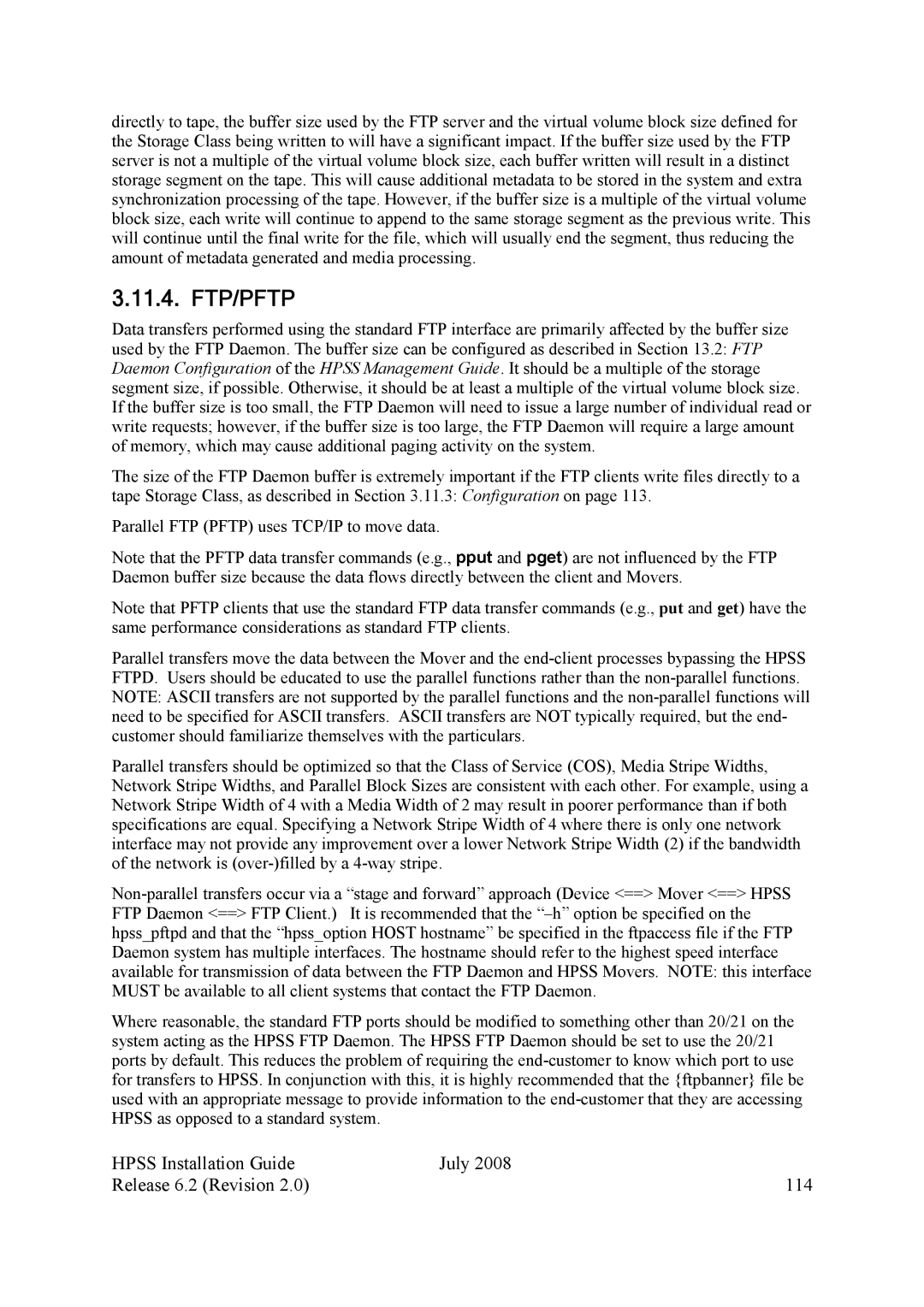directly to tape, the buffer size used by the FTP server and the virtual volume block size defined for the Storage Class being written to will have a significant impact. If the buffer size used by the FTP server is not a multiple of the virtual volume block size, each buffer written will result in a distinct storage segment on the tape. This will cause additional metadata to be stored in the system and extra synchronization processing of the tape. However, if the buffer size is a multiple of the virtual volume block size, each write will continue to append to the same storage segment as the previous write. This will continue until the final write for the file, which will usually end the segment, thus reducing the amount of metadata generated and media processing.
3.11.4. FTP/PFTP
Data transfers performed using the standard FTP interface are primarily affected by the buffer size used by the FTP Daemon. The buffer size can be configured as described in Section 13.2: FTP Daemon Configuration of the HPSS Management Guide. It should be a multiple of the storage segment size, if possible. Otherwise, it should be at least a multiple of the virtual volume block size. If the buffer size is too small, the FTP Daemon will need to issue a large number of individual read or write requests; however, if the buffer size is too large, the FTP Daemon will require a large amount of memory, which may cause additional paging activity on the system.
The size of the FTP Daemon buffer is extremely important if the FTP clients write files directly to a tape Storage Class, as described in Section 3.11.3: Configuration on page 113.
Parallel FTP (PFTP) uses TCP/IP to move data.
Note that the PFTP data transfer commands (e.g., pput and pget) are not influenced by the FTP Daemon buffer size because the data flows directly between the client and Movers.
Note that PFTP clients that use the standard FTP data transfer commands (e.g., put and get) have the same performance considerations as standard FTP clients.
Parallel transfers move the data between the Mover and the
Parallel transfers should be optimized so that the Class of Service (COS), Media Stripe Widths, Network Stripe Widths, and Parallel Block Sizes are consistent with each other. For example, using a Network Stripe Width of 4 with a Media Width of 2 may result in poorer performance than if both specifications are equal. Specifying a Network Stripe Width of 4 where there is only one network interface may not provide any improvement over a lower Network Stripe Width (2) if the bandwidth of the network is
Where reasonable, the standard FTP ports should be modified to something other than 20/21 on the system acting as the HPSS FTP Daemon. The HPSS FTP Daemon should be set to use the 20/21 ports by default. This reduces the problem of requiring the
HPSS Installation Guide | July 2008 |
Release 6.2 (Revision 2.0) | 114 |
